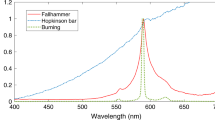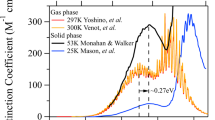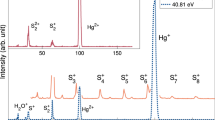Abstract
A THEORY of the vapour pressure relationship for isotopic molecules has been given by Topley and Eyring1. It is, however, difficult to see a priori how to apply the theory in calculating vapour pressures for a particular case, in view of our lack of knowledge of the liquid state. The isotopic molecules of carbon tetrachloride would be expected to be very favourable cases for showing differences of vapour pressures if they exist. Grimm2 carried out a multiple fractionation with a single small packed column and calculated that neighbouring isotopic molecules on the mass scale had boiling points not differing by more than 0.001° C. We have calculated from Grimm's results that his total fractionation was equivalent to 75 theoretical plates.
This is a preview of subscription content, access via your institution
Access options
Subscribe to this journal
Receive 51 print issues and online access
$199.00 per year
only $3.90 per issue
Buy this article
- Purchase on Springer Link
- Instant access to full article PDF
Prices may be subject to local taxes which are calculated during checkout
Similar content being viewed by others
References
Topley, B., and Eyring, H., J. Chem. Phys., 2, 226 (1934).
Grimm, H. G., Z. phys. Chem., Abt. B, 2, 181 (1929).
Lewis, G. N., and MacDonald, R. T., J. Chem. Phys., 1, 341 (1933).
Cohen, K., J. Chem. Phys., 8, 588 (1940).
Author information
Authors and Affiliations
Rights and permissions
About this article
Cite this article
RANK, D., KAGARISE, R. Vapour Pressure of Isotopic Carbon Tetrachlorides. Nature 168, 740–741 (1951). https://doi.org/10.1038/168740b0
Issue Date:
DOI: https://doi.org/10.1038/168740b0
This article is cited by
Comments
By submitting a comment you agree to abide by our Terms and Community Guidelines. If you find something abusive or that does not comply with our terms or guidelines please flag it as inappropriate.



